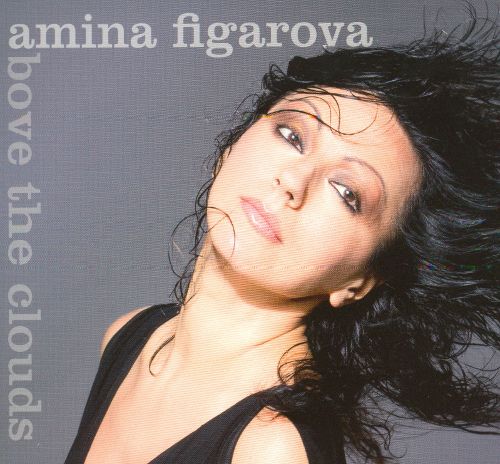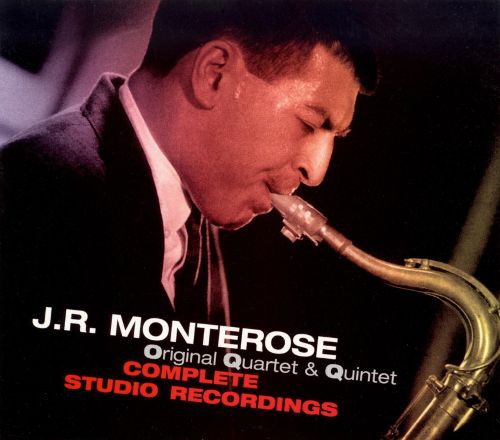
Calling all jazz fans who need a little assist (or excuse) to search out some perhaps-overlooked gems. Also, because among American “vernaculars,” jazz claims such a profusion of accomplished artists — young, mid-career and mature — there’s always quality recordings worth digging (for).
I came across this list, which has never been published before — my choices for the best jazz recordings of 2009. It was intended for an trans-Atlantic publication which never got off the ground of its Lindbergian aspirations. I did, however, present the list and comments on the air on WORT-FM in Madison, courtesy of one of that excellent community radio station’s jazz hosts, Alexander Wilding-White.
Special thanks to Alexander. Also, because I haven’t posted much lately in an effort to complete my first book, Voices in the River: The Jazz Message to Democracy, I am sharing this now.
You will note, at the end of most of the comments, a track number and a time number, like “5:25.” Ignore these, or investigate further: These disc jockey cues indicate specific moments on the recordings I considered highlights of the albums for air-play or listening.
Note finally my “Top 12,” and sundry other categorical winners. I think in such lists the round number of “10” is too arbitrary to not include a few worthy more.
NEW RELEASES 2009
- Komeda Project: Requiem (WM) The slow, vamping tempo and the composed sequence of solo instrumental voices suggests a procession of humanity that could go on forever. The late Polish pianist-composer Krzysztof (pronounced Shis-toff) Komeda wrote many evocative and brooding scores for Roman Polanski films including Rosemary’s Baby and was a giant of European jazz. His personal music, like his commissioned scores, always commanded more arresting attention than your standard Hollywood soundtrack. A balance of personal structure, mystery and lyricism, Komeda Project features Milwaukee-based trumpeter Russ Johnson, among others. I chose this as best of the year before I meet Russ. So it reflects an unbiased assessment of a very special work of art. Requiem is a superb, deeply-knowing and inspired tribute band. First 2:50 of “Dirge for Europe.” (Also worthy is Tomasz Stanko’s 1997 album of Komeda compositions, Litania on ECM.)
- Vijay Iyer: Historicity (ACT) In a great year for pianists, Vijay Iyer showed astonishing range on Historicity which includes reworkings of pieces by Andrew Hill, the hip-hop group MIA, Leonard Bernstein, Julius Hemphill and Stevie Wonder along with revisited originals In Iyer’s segue from Stevie Wonder’s “Big Brother” to Julius Hemphill’s more ominous “Dogon AD,” notice how the second tune’s intervals suggest an abstraction of Stevie’s melody. But what’s really working overtime is Vijay Iyer’s fearless pianistic and creative intelligence.
- Laurence Hobgood: When the Heart Dances (Naim) I once had a conversation with Laurence Hogood, singer Kurt Elling’s longtime pianist and arranger and he proved a man of great creative hunger. He ended up recording a superb duet album When the Heart Dances. The familiar pop song “Que Sera, Sera” was used as a key plot device in the Alfred Hitchcock film The Man Who Knew Too Much with Jimmy Stewart and Doris Day. Hobgood and bassist Charlie Haden transform it into their own philosophic reflection. The album’s heart dances all around que sera, sera. First 2:00
- Enrico Pieranunzi-Marc Johnson-Joey Baron: Dream Dance (CAM Jazz) Pianist Enrico Pieruanunzi is another exemplar of the deep maturity and vitality of European jazz. Here with Bill Evans’ last bassist and the American drummer Joey Baron, Pieranunzi shows how far beyond his romantic Evans influence he’s gone, without forsaking it. This powerfully sculpted theme is “No-Nonsense.” 1:30
- Amina Figarova: Above the Clouds (Munich) Yet another European, Figerova demonstrates how far women have traveled in jazz. Admittedly influenced by Maria Schneider, she has the arranging skill to actually build on that imposing influence. In this sextet and octet recording “Sailing through Icy Waters” she evokes the questing, treacherous expedition of Henry Hudson in 1609, searching for a passage to China. Hudson ended up discovered the great New York state river which bears his name today. cut 9, 1:39 or so.
- Jim Hall & Bill Frisell: Hemispheres (ArtistShare) This meeting of two generations of master guitarists worked so well they recorded a 2-disc set. Here the intrepid Frisell adapts Bob Dylan’s “Masters of War” one of the most righteously angry songs ever recorded. Frisell played this song at the Barrymore a few years back and never announcing the title. It was chillingly unforgettable. Overall, though, this recording betrays a profound warmth and musical brotherhood between two generations of guitarists. Cut 8, 1:25
- Marcin Wasilewski: January (ECM) I heard this superb Polish trio live in Milwaukee last winter and my late father, who died in November, said it was the best jazz he had heard in years. I’m glad he got that last beautiful dose of modern jazz. These comparatively young musicians possess the the derring-do of the best American improvisors but with a distinctly-seasoned European sensibility, like eroding autumn leaves flirting almost defiantly with January’s harshly capricious winds. This is actually the working trio behind the great trumpeter Thomas Stanko. “Cinema Paradiso” 4:20 to 6:03
- Josh Berman, Old Idea (Delmark) Cornetist Berman was a surprise hit of the second Madison Music Collective summer concert put together last Aug. by WORT’s own Joanne Powers, who is also a multi-instrumental reed player. Chicagoan Berman drove up as a last-minute substitute for another musician taken ill, and he instantly began unfurling his intensely nuanced mastery of the cornet, a rarely played horn these days. I bought this album from him before he drove back home and it shows his Ornette Coleman influence in a band without a piano but with a vibist. Cut 4: “Nori” 1:50
- D. J. Strickland: In This Day (Strick Musik) What amazed me among other things was this drummer-bandleader’s ability to master and adapt the uncanny drumming style of Elvin Jones. Listen, many hip drummers master Jones’ triplets but Strickland also gets Jones propulsive attack of the drumheads and bright-but-dazzlingly-integrated cymbal playing. Track-after-track, I let Strickland’s rhythmic brilliance wash over me, with ears wide open and loving it. In This Day is a deeply satisfying post-Coltrane album featuring Strickland’s brother Marcus on reeds. Here he’s aided by conga player but the rhythmic effect is breathtaking. Cut 1, first 2:20
- Tom Gullion: Carswell (Momentous) This band dazzled the crowd at the Madison Music Collective’s opening concert of its summer series at Art in the Barn in Fitchburg. Their funky backbeats and deep grooves worked more like the contagious complexity of the Dave Holland Quintet, rather than sounding like commercial ploys. Well-known Madison-area trumpeter Dave Cooper calls saxophonist-composer Gullion the best musician he’s ever played with. I believe it. Here Gullion and Cooper play “Mellowing” in a quintet that includes Madison’s own Tim Whalen on keyboard. First 1:10 of “Mellowing.”
- Kelsey Jillette: The Water Is Wide (CAP) Jillette was the most refreshing vocalist I heard this year. On her ingenious medley of Tadd Dameron’s “Hot House” and “What is this thing called Love?” catch her deftly elastic phrasing and warm effervescence. She’s been perfecting her style with a fine band at Greenwich Village’s 55 Bar for two years now. First 1:40 of “Hot House” track 5
- Mostly Coltrane, Steve Kuhn (ECM) The amazingly fecund legacy of John Coltrane, spanning his whole career as a leader, is presented here by an original, harmonically inquisitive pianist. Steve Kuhn played and recorded with Coltrane in 1960, right before McCoy Tyner took over. “Welcome,” with tenorist Joe Lovano, takes a melody that oddly recalls “Happy Birthday” and renders it eloquent, warm and supple, a classic case of a jazzer hipping a square melody. Mostly Coltrane surprises us with all of its late-period Coltrane style and shows how serene balladic ‘Trane could be amid all the free-jazz furor he pioneered and was attacked for. Kuhn reveals how late ‘Trane could be an adventure of deep, chiarscuroed nuance and meditative beauty.

REISSUE J.R. Monterose: Original Quartet and Quintet: Complete Studio Recordings (Gambit) Detroit tenor man J. R. Monterose was the proverbial musicians musician who spent too much of his career in Europe. Even at a fast tempo his swing snaps, and his ideas are crystal clear and witty. And this tune also includes smart counterpoint with trumpeter Ira Sullivan on a Monterose original named “Marc V” recorded in Hackensack in 1956. “Marc V” 2:15.
2. Stan Getz: Apasionado (Verve)
3. Charley Patton: This Is the Blues (Proper)
VOCAL
- Kelsey Jillette: The Water Is Wide (CAP) Jillette was the most refreshing vocalist I heard this year. On her ingenious medley of Tadd Dameron’s Hot House and what is this thing called love catch her deftly elastic phrasing and warm effervescence. She’s been perfecting her style with a fine band at Greenwich Village’s 55 Bar for two years now. First 1:40 HotHouse track 5
DEBUT
- E.J. Strickland: In This Day (Strick Musik)
LATIN
Wayne Wallace: ¡Bien Bien! (Patois)
____________
1 Kuhn played with the first version of Coltrane’s quartet, in the spring of 1960, during a long gig at the Jazz Gallery in the East Village, before McCoy Tyner took over to finish the run. And that was it. Later Mr. Kuhn’s music followed a path very different from Coltrane’s, one of stricter harmony, piano-trio subtlety and endless curiosity about ballad standards.
Photos courtesy allmusic.com.

